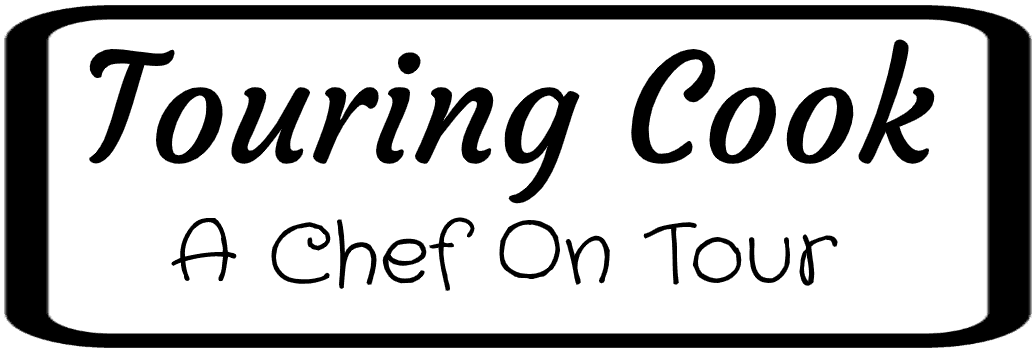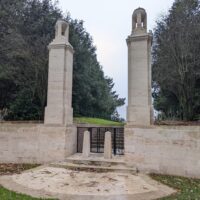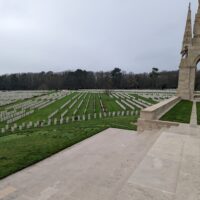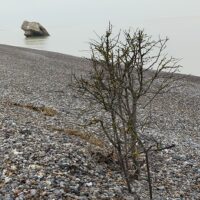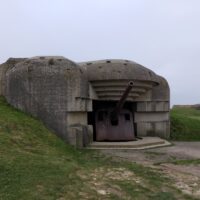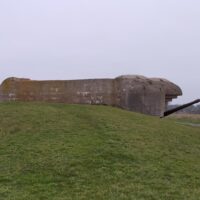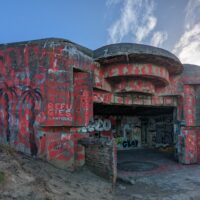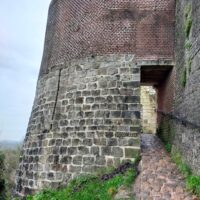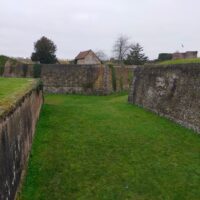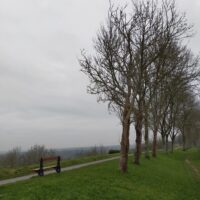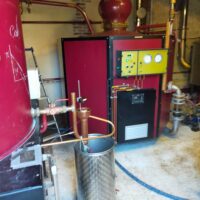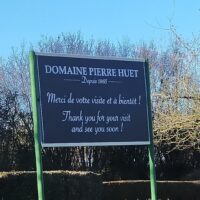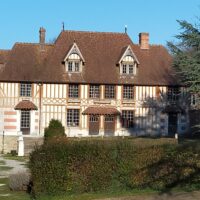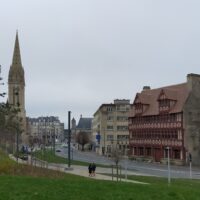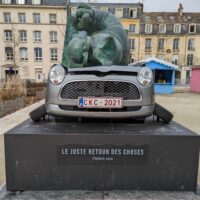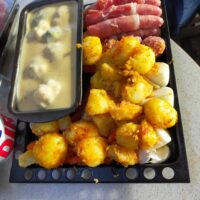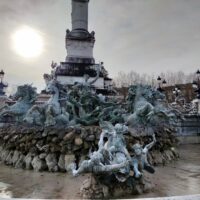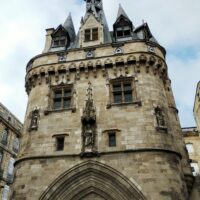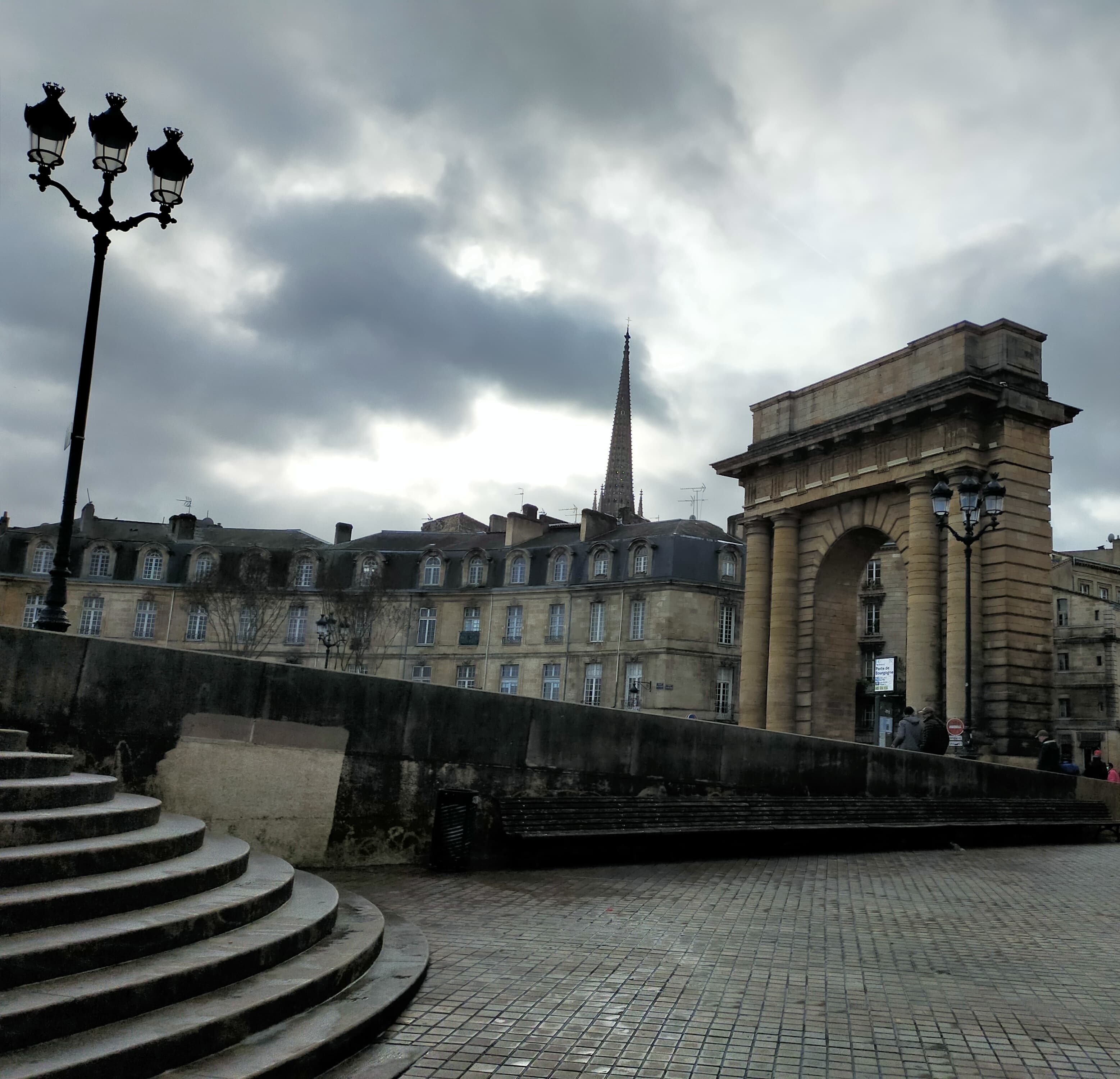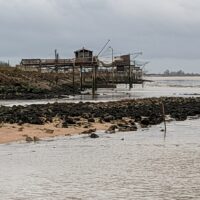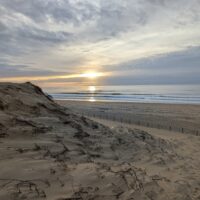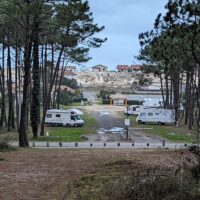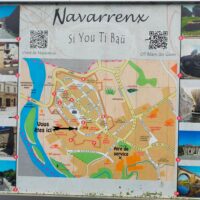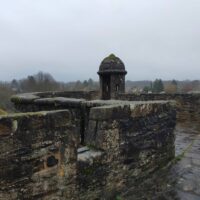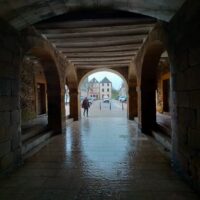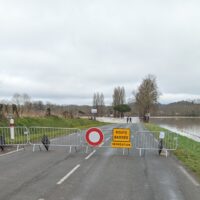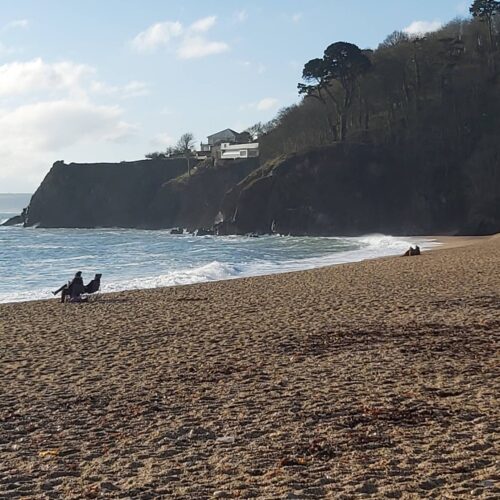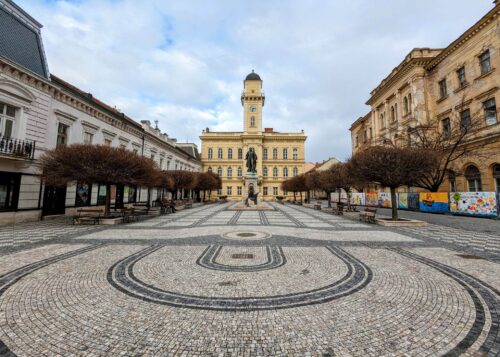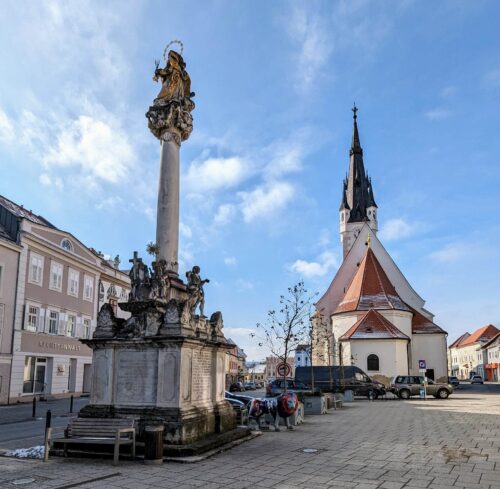After our amazing introduction to motorhoming around McScotland and the North East we made our way back to Kent where we spent a few days. We did some essential maintenance and gave the van a service.
We hopped across the channel on the Eurotunnel mid December. From Calais we made our way down through western France, and then crossed the Pyrenees into Spain mid January. This post covers some of the highlights from that trip.
Disclosure: some of the links on this site are affiliate links. This means that at no additional cost to you I may earn a small commission if you click through and make a purchase. In addition, as an Amazon Associate, I earn from qualifying purchases.
The Detail:
Distance Covered: 1556 miles in 28 days
Financial: Fuel £280; LPG £13; Site Fees/Parking £52; Groceries £605; Laundry £15; Eating Out £13
Stopovers: Sangatte; Montreuil; La Hourdel; Les Petit Dalles; Calvados; Arromanches; Fervaches; Port du Dinan; St Anne d’Auray; St Nazare; Chailles les Marais; Mauze sur le Mignon; Varaize; Segonzac Clerac; St Romainela Virvee; St Emilion; Chateaux du Garde; Bordeaux; Lesparre-Medoc; Le Pointe de Grave; Carcans; Cap Ferret; Le Teich; St Eulalie en Born; Castets; L’Hopital St Blaise
Once in French France we spent about a month gradually making our way generally southward down the Western coast. We passed through Normandy, Brittany, Pays de la Loire and Nouvelle Aquitaine on our way to the border with Spain at Aldapa, As with our previous trip there was so much that we saw and did that I couldn’t hope to cover everything, so here are some of our favourites:

Reminders of the World Wars
It is almost impossible to travel through Normandy and Western France without coming across some of the many cemeteries, museums and monuments. Normandy alone has 27 military cemeteries, as well as numerous museums and monuments. There are at least eight driving routes along the landing beaches and historic battlefields.
Even without going to the recognised sites, there are numerous reminders of the World Wars around almost every corner. Without specifically singling out any sites we found some fascinating, yet sometimes stark and humbling, reminders of those dark times.
These are just some of the places we visited…..
Etaples military cemetry
Etaples military cemetery where the graves of over 10,000 young men who fought in WW1 can be found.
Sangatte
The gun emplacements at Sangatte were notorious as the site from which the Germans had shelled Dover for 3 years
La Hourdel
The concrete Nazi Blockhouses at La Hourdel
Arromanches-les-Bains

The D-Day Landing Museum is located on the cliff tops outside the town of Arromanches-les-Bains, at the geographical center of the D-Day beaches. It is located where one of the two artificial ports responsible for supplying the troops engaged in the battle of Normandy was built.
Longues sur Mer
The Batterie de Longues sur Mer is one of the gun emplacements that made up the Atlantic Wall built by the Nazis between 1942 and 1944. It is remarkably well preserved, still housing the four long-range 150mm naval guns in their concrete casemates. There are also the remains of other structures built to serve and protect them.
Bayeux
The Memorial Museum of the Battle of Normandy in Bayeux records how the events of the D-Day landings unfolded including all of the military operations which took place in Normandy over the summer of 1944.
Soulac sur Mer
The German Fortress of Batterie Cotiere des Arros at Soulac sur Mer was another link in the Atlantic Wall. The whole site occupies about 10 hectares with around 20 bunkers of different types. The bunkers are all free to visit, but many have been damaged by graffiti.
If the history of the World Wars is something you are interested in, then a visit to this area is a must.
Montreuil sur Mer
Montreuil sur Mer was one of the first places we stopped on our trip through French France. It is a picturesque old town with imposing ramparts, a fortified citadel, and a bustling town square which was charming in its Christmas splendor.
If you are interested in food and drink then Montreuil boasts an unusually high concentration of quality eateries and specialty shops.
Amazing little village of Ault
As I may have mentioned once or twice before, it is our habit while driving around to dive off of the main road down whichever side road appears interesting. Occasionally this might be a risky strategy, especially if the roads become too narrow or there are other restrictions or obstacles for a vehicle the size of our motorhome.
However, every now and then we stumble across a real gem that we wouldn’t have otherwise found. Ault was one of those gems. The narrow road meanders down through a narrow tree-lined valley to the shore. Nestled among the trees are some very attractive and unique homes. At high tide the beach appears to be pebbles and quite steep, but as the tide recedes it reveals a large sandy beach with stunning views of the sheer white cliffs on either side.
Mistletoe Trees
Yes, I know there is no such thing as a mistletoe tree. Mistletoe is a parasitic plant that grows on it’s preferred host tree. The reason we called them mistletoe trees is that on some of the trees we saw the mistletoe was so prolific it gave the appearance of replacing the trees’ own foliage.
As it was near Christmas I couldn’t help but reflect on the tradition of placing a sprig in the doorway. Supposedly standing under the mistletoe means getting a kiss, but sadly, despite lingering there, I didn’t get any more kisses than normal. Probably for the best.
Calvados
Any visit to Normandy wouldn’t be complete without sampling the cidre and calvados for which it is famous. A good way to do this is to follow the “Cider Route”. The signposted route winds through typical Augeron villages, stud farms, mansions, and fields of apple trees for about 40 km.
Along the way, there are many opportunities to sample some of the superb products on offer. We stopped at the calvados producers Dupont House of Victot Pontfol where we were able to have a good look around, and Pierre Huet where we purchased some of their wares.
Cider Route
Caen
Caen is the capital of the calvados region. The city is dominated by the Chateaux de Caen which was built around 1060 by William the Conqueror.
We visited on a Sunday, specifically to visit the huge street market there.
Street markets are a way of life in France. Right across the country, you can find a market in one town or another pretty much any day of the week. They are usually morning affairs, often packing up for the day by 1 pm. Varying in size from the small village market of just a few stalls to huge city markets with hundreds of stalls selling just about everything.
Christmas
Christmas in France is a major public holiday as in most Christian countries. In contrast to the UK, however, the main Christmas meal, called “Reveillon” is eaten on Christmas Eve or the early hours of Christmas Day after the midnight church service.
This caught us out a little bit as we were planning to buy enough supplies to see us over the Christmas period, but wanted to leave it as close as possible to the holidays as storage in the van is limited. Therefore we went shopping on the day before Christmas eve, not realising Christmas Eve was when the French generally celebrate. I think the whole of France was in the hypermarket I chose to go to. Should have gone a day or two earlier.
For Christmas itself, there were a few things we wanted that influenced where we would stay. We wanted somewhere secure, in a quiet location, with facilities for topping up water and emptying waste, preferably with an electric hook-up and a good mobile signal.
We settled for a village aire at Chaillé les Marais. It was perfect for what we wanted, and as a bonus, we were the only ones there.
Our Christmas
Christmas in France
When in Rome ....
Of course, wine in France is an integral part of the national culture. Buying a bottle is a ceremony and tasting it is an art. Wine tasting is a ritual passed down from generation to generation.
A trip through France wouldn’t be complete without a visit to one of the many vineyards. The most famous French wine regions are Alsace, Bordeaux, Burgundy, Champagne, Provence, and Rhone Valley.
Traveling down the Western coast of France you inevitably find the extensive vineyards of the Bordeaux region.
Naturally, we had to visit a couple of these, it would have been rude not to. Many of the wine producers will allow you to park a motorhome and offer a wine tasting. There is no obligation to buy anything, but the expectation is, of course, that you will purchase a bottle or two.
Chateau de Rol, St. Emilion
Chateau du Garde
Vineyards – Chateua de Rol and Chateaux du Garde
Bordeaux
Bordeaux is the city of wine and that is what it is famous for. It is located in the Nouvelle-Aquitaine region on the banks of the Gironde estuary at the confluence of the Dordogne and Garonne rivers.
It was once described as the most beautiful city in France but until recently fell into something of a decline. Since the 1990s, however, Bordeaux has worked hard to restore that reputation.
It is a compact city and as such, you can easily walk around the main attractions in a single day as we did. There is so much to see and do. Some of the sights we took in as we wandered around include:
The large clock – La Grosse Cloche – one of the middle-aged entrances into the city
The Wine Museum – La Cité du Vin
The Stone Bridge – Pont de Pierre – the arched stone bridge over the Garonne built in Napoleonic times.
Place de la Bourse and the water mirror
The Girondins Monument – Monument aux Girondins – a fountain commemorating the Girondists of the French Revolution
Aquitain Gate – Porte d’Aquitaine
The public garden – Jardin Publique
Bordeaux
Saint Emilion
Bordeaux regional cuisine
Carrelets at Phare de Richard
Dotted along the Gironde Estuary are the picturesque fishing huts known as carrelets. These are built on stilts at the water’s edge and are accessed via a narrow walkway.
Each has a square fishing net which is baited and dropped to the bottom at high tide, then lifted via a pully system to raise the catch. Things that may be caught include shrimp, mullet, shads, and eels.
We came across these unusual huts by accident when we stayed near the Phare de Richard (the lighthouse of Richard) just to the north of Pauillac. The lighthouse has been a museum of estuarine life since the 19th century.
Cap Ferret
Cap Ferret is a spit of land on the wild Atlantic coast which separates the ocean from the bay of Arcachon. With extensive dunes, the area is probably best known for its oyster farms. From here you can also look across the water to Europe’s highest sand dune, the dune of Pilat.
The dunes blanche (white dune) is a reference to a beach on Cap-Ferret but is also the name given to a cream-filled choux pastry invented by Pascal, apparently inspired by the dunes.
We bought ours from Chez Pascal in Cap Ferret as we wanted to try the originals. Just superb, and well worth seeking out.
Dune of Pilat
We are not normally ones for doing the tourist thing. However, we couldn’t be so close to the Dune of Pilat and not visit.
It is Europe’s tallest sand dune, located in the Arcachon Bay area. There are about 2 million visitors to the dune each year.
St. Julien en Born
We had a stopover at this little village as we made our way south. A very pleasant place for a short stay on our journey.
However, that isn’t why I mention it here. Even if I didn’t know it at the time, this was our first encounter with processionary caterpillars.
These caterpillars have poisonous bristles which can have horrific effects on both animals and children.
Navarrenx "Plus Beaux Villages de France”
Les Plus Beaux Villages de France (meaning “the most beautiful villages of France”) is an independent association created in 1982 for the promotion of the tourist appeal of small rural villages with a rich cultural heritage. There are over 150 member villages. Navarrenx is included as a member of the scheme.
Navarrenx is a lovely village in the Nouvelle Aquitaine region of France. It is most notable for the 10 meter high fortified walls that surround it and a walk along those walls is well worthwhile. The centre of the village is also worth exploring.
Flooding
In December 2021 a combination of heavy rains and warm southern winds melting snowbanks in the Pyrenees resulted in rivers bursting their banks and flooding across wide areas of South West France. Typically this was at the exact same time as we were trying to traverse the region and cross the Pyrenees. After some interesting diversions, we managed to skirt the affected areas and made our way into Spain.
As before, There is so much more we saw and did that I haven’t included here – you’ll just have to go see it for yourself!
After this amazing journey down Western France, our next stop was Spain, and that will be the subject of my next post.
I haven’t gone into great detail about anything in particular in this post, so if you would like me to expand on anything please leave a comment and I will endeavour to write another separate post on the topic.
Happy Motorhoming.
Hope You Enjoy!
Please leave us a comment!
